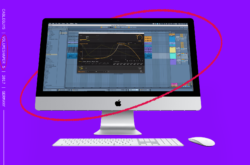Spinnin’ Records is an influential record label that features producers and DJs across genres spanning dance, house, trap, and more.
Splice recently partnered with Spinnin’ Records to release their first sample pack, which contains big room sounds that reflect the label’s unmistakable sound. To celebrate the pack, Spinnin’ Records made a tutorial video where they walk through a few techniques for producing big room house tracks:
Below, we’ve summarized how to achieve two elements that are particularly key to the genre.
Producing big room drums
Hard-hitting drums are key to creating the high energy of big room productions. In particular, the kick typically serves as a central focal point that keeps the overall momentum going. Often times, kicks in the big room genre have a pitched bass attached to them. Re-pitching a kick sample so that it matches the key of your track or a particular chord seems like a logical move, but this can introduce artifacts to the sample, especially if you have to transpose by a large number of semitones.
Fortunately, many sample packs (including the Spinnin’ Records pack) will contain twelve of the same kick, with different bass notes for each pitch across the chromatic scale. If you have these at your disposal, it’s better to use the kick sample that’s labeled with your desired pitch than to re-pitch the first one-shot you dragged into your session, because these samples won’t have any of the undesirable artifacts that come with transposition algorithms. Because the kick is so fundamental to the big room sound, having a sample that’s as clean as possible is imperative.
To hear this process in action, check out 0:55 of the tutorial video.
Producing big room synths
In big room house, we want our synths to feel clean, wide, and energetic all at once. Rather than trying to do it all with a single synth, a better is approach is to layer different synths that are tailored for specific functions. For example, one clean mono synth can serve as the main sound that cuts through the mix. Then, we can create width by layering it with a detuned, stereo saw lead that plays the same melody. We can then create a separate synth that plays the melody an octave higher to fill the frequency spectrum, another with a lot of reverb to establish a sense of space, etc.
While layering can do wonders in achieving a larger-than-life synth sound, sometimes we can get carried away and add too many layers, which will result in a muddy mix. If you feel like things are getting out of hand, try muting individual layers while listening to the overall track. If you feel like muting a layer doesn’t make a big difference in the context of the greater mix, then that layer is probably unnecessary.
To hear this process in action, check out 4:25 of the tutorial video.
Do you have any questions around producing big room house tracks? Let us know in the comments below, and check out Spinnin’ Records’ sample pack for some one-shots, loops, and presets that can get you started.
Explore royalty-free sounds from leading artists, producers, and sound designers:
October 18, 2019



